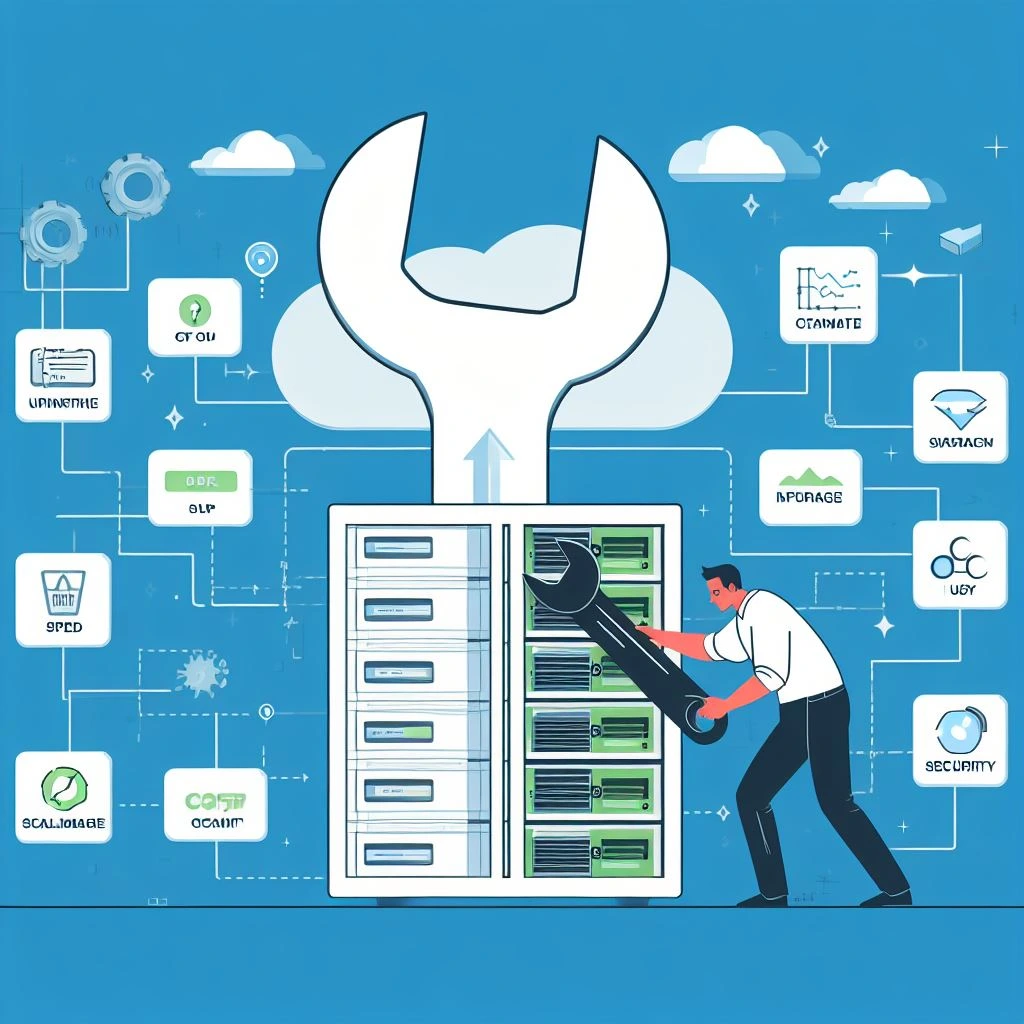As technology progresses rapidly, utilising cutting-edge software is critical for companies. Businesses still relying on antiquated legacy systems face severe competitive disadvantages. By collaborating with skilled IT partners, organisations can expertly modernise outdated architecture. This enables harnessing innovative capabilities, improving efficiency, and gaining a strategic edge.
Specifically, legacy solutions lack flexibility to adapt as needs grow. Consequently, critical processes suffer from reduced performance, limited scalability, and integration challenges. These constraints impede productivity and prevent capitalizing on emerging technologies. Moreover, aging systems introduce cyber risks, expose sensitive data, and complicate compliance.
In contrast, transitioning core platforms to cloud-based software promotes agility, resilience, and security. Partners proficient in migration methodologies help companies seamlessly overhaul systems without disrupting daily operations. Once modernised, organisations benefit from enhanced automation, real-time analytics, robust integrations, and mobile accessibility.
Ultimately, an unwavering commitment to continuous modernisation is key for business vitality. By selecting providers with proven expertise, companies can confidently transform rigid architectures into adaptable digital foundations. Rather than allowing legacy systems to obstruct progress, proactive IT investments position organisations to optimise performance, leverage innovation, and thrive far into the future. For leaders seeking a technology advantage, upgrading business-critical software is truly imperative.s
The Problems of Old Software Systems
.webp)
Indeed, numerous organisations still utilize antiquated software systems that served them well in the past but now pose mounting challenges:
Specifically, outdated interfaces frustrate employees and hamper productivity. Integration with new tools is arduous, fracturing critical processes. Lack of ongoing support renders systems vulnerable to cyberattacks. Reliability issues and downtime disrupt operations. Vendors no longer maintain or enhance the platforms. This prevents adding capabilities to meet evolving needs.
Undoubtedly, such legacy solutions leech resources, constrain growth, and expose companies to preventable risks. The longer obsolete systems remain entrenched, the more pronounced their adverse impact generally becomes over time.
Ultimately, legacy software impedes organizations in today’s fast-paced digital landscape. Transitioning to modern solutions is essential for resilience and competitiveness. By partnering with experienced IT advisors, companies can expertly overhaul aging architecture. Cloud-based systems offer superior flexibility, efficiency, and security. With robust integrations and automation, processes accelerate and productivity climbs. Rather than allowing outdated platforms to obstruct progress, savvy leaders continuously modernize business-critical infrastructure. They recognise technology as instrumental for innovation, growth and strategic advantage. Indeed, upgrading core systems liberates organisations to optimize performance and capitalise on emerging opportunities.
Advantages of Software Modernisation

By migrating from legacy systems to more modern software architectures, businesses can:
- Enhance productivity - Intuitive interfaces and workflows boost employee satisfaction and efficiency.
- Increase security - Latest protections better safeguard against evolving cyberthreats.
- Improve flexibility - Integration with newer tools provides more agility.
- Reduce costs - Consolidating disparate systems decreases operating expenses.
- Unlock innovation - New capabilities and emerging technologies can transform operations.
Modern software provides the digital foundation for businesses to become more resilient, collaborative and forward-thinking.
The Dangers of Using Outdated Software

Outdated software can pose significant risks and limitations for your business. Here are some of the key points:
- Security risks: Outdated software is often more vulnerable to cyberattacks. This can lead to data breaches, financial losses, and damage to your reputation. Hackers are constantly finding new ways to exploit vulnerabilities in outdated software, so it is important to keep your software up to date with the latest security patches.
- Productivity limitations: Outdated software can slow down your computers and networks, making it difficult to get work done. This can lead to lost productivity and revenue. Additionally, outdated software may not be compatible with new technologies, such as cloud computing and mobile devices. This can make it difficult to collaborate with others and stay up-to-date with the latest trends.
Key Steps for Successful Modernisation

Migrating business-critical systems takes thoughtful planning and execution. Here are best practices:
- Assess current environment - Document legacy systems and pain points.
- Define goals and strategy - Align modernisation with business objectives.
- Create implementation roadmap - Outline phases, resources, timelines.
- Select solutions carefully - Ensure software aligns with goals and integration needs.
- Migrate data securely - Safely transfer data to new systems.
- Train personnel extensively - Drive adoption through change management.
- Optimise continuously - Fine-tune new systems post-implementation.
Partnering with Modernisation Experts

For companies lacking specialised expertise and bandwidth, partnering with experienced IT project teams accelerates modernisation success. Knowledgeable partners assess current environments, design strategic roadmaps, select optimal solutions, oversee secure data migration, deliver training and provide ongoing support.
Upgrading core platforms is a complex endeavor but pays huge dividends. By collaborating with modernisation specialists, organisations can retire outdated systems holding them back and embrace more agile, productive software built for the future.
How to Modernise Your Software Infrastructure for Success

Businesses need to be able to adapt quickly to changing market conditions. This requires a modern software infrastructure that is secure, efficient, and scalable.
Here are three steps you can take to modernise your software infrastructure:
- Prioritise security. Outdated software is often more vulnerable to cyberattacks. By modernising your software, you can implement new security measures, such as robust firewalls and encryption, to protect your data and systems.
- Invest in marketing tools. Modern software can help you reach a wider audience and personalise your marketing campaigns. For example, customer relationship management (CRM) software can help you manage customer data and track your marketing ROI.
- Move to the cloud. Cloud-based solutions offer a number of benefits, including flexibility, scalability, and cost-effectiveness. By moving your software infrastructure to the cloud, you can access your applications and data from anywhere, which can improve productivity and collaboration.
By following these steps, you can modernise your software infrastructure and improve your business's overall security, efficiency, and agility.
To sum up, outdated software can have a significant negative impact on businesses. Therefore, businesses should be aware of the signs of outdated software, such as poor performance and security issues, and take appropriate actions to address them. Modernising business software can bring many benefits, such as increased efficiency, improved security, and access to new features and functionalities. However, choosing the right software upgrade strategy is essential for businesses, as it can affect the outcome of the modernisation process. By following the steps to successfully modernise software infrastructure, businesses can ensure a smooth transition to updated and more efficient software systems. It is evident that modernising software is not only a necessity but also an advantage for businesses in the long run.
To discuss how C9 can assist with modernising your outdated business software, contact us today. Our team of experts is here to help your company embrace the future.
Follow C9 on Facebook, Twitter, LinkedIn, YouTube, and view our location on Google Maps. Connect with our CEO Marcus Eddy on LinkedIn.
Software Development Learning Treasury
Step into our rich collection of articles examining innovative development practises, technical solutions, and industry expertise. From advanced coding approaches to powerful architectural frameworks, our authoritative content will help you refine your programming abilities and elevate your development achievements.
Building a Humane Economy for Animals & Wildlife: The Role of Software and Technology
Top 15 Desktop Software Development FAQs Answered by C9
Custom Bespoke Software Development for Agriculture & Farming in Australia
Building a Future-Proof Business with Scalable Bespoke Software Development
5 Ways Bespoke Software Can Solve Your Inventory Management Headaches
System and App Integration FAQs Answered by C9 Software
Software Development FAQ answered by C9
The ROI of Custom Software Development: A Guide for Australian Businesses
Beyond the Build: Tips & Tricks to Maximise Efficiency with Custom Software (Australian Businesses)
Scaling with Confidence: Future-Proof Your Business with Scalable Software
AI-Powered Bespoke Software: Building the Future, One App at a Time
Reduce Operational Costs with Custom Logistics Software
5 Ways Custom Software Can Improve Your Retail Business
Avoiding Skill Stagnation with Outsourced Software Partners
The True Hourly Cost of Inhouse vs Outsourced Software Development Team
What are the Benefits and Drawbacks of Inhouse and Outsourcing Software Development Project Management & Administration?
What You Need to Know About Insourced vs Outsourced Software Development Services
Understand the Advantages and Disadvantages of Internal vs. External Software Development for Business Analysis
Modernise Antiquated Business Software Before It's Too Late
Custom Software Development: The Secret Weapon to Boost Your Business's Success
Top 15 Low Code / No Code Development FAQ's Answered by C9
Empower Your Team: Citizen Developers and the Rise of Low-Code/No-Code in Australia